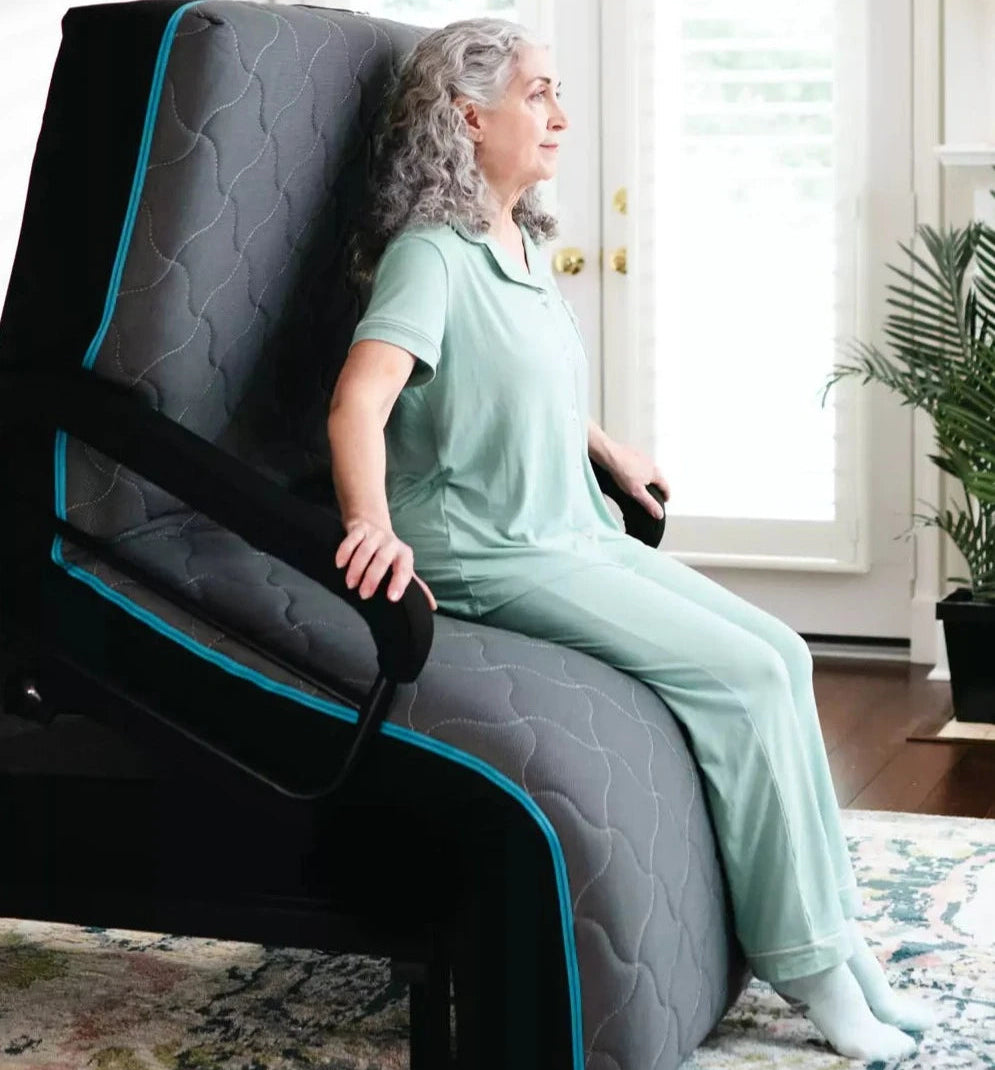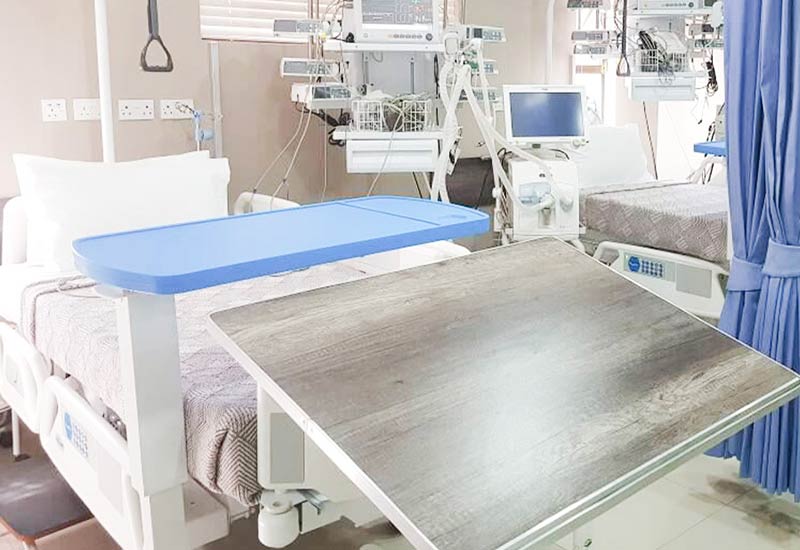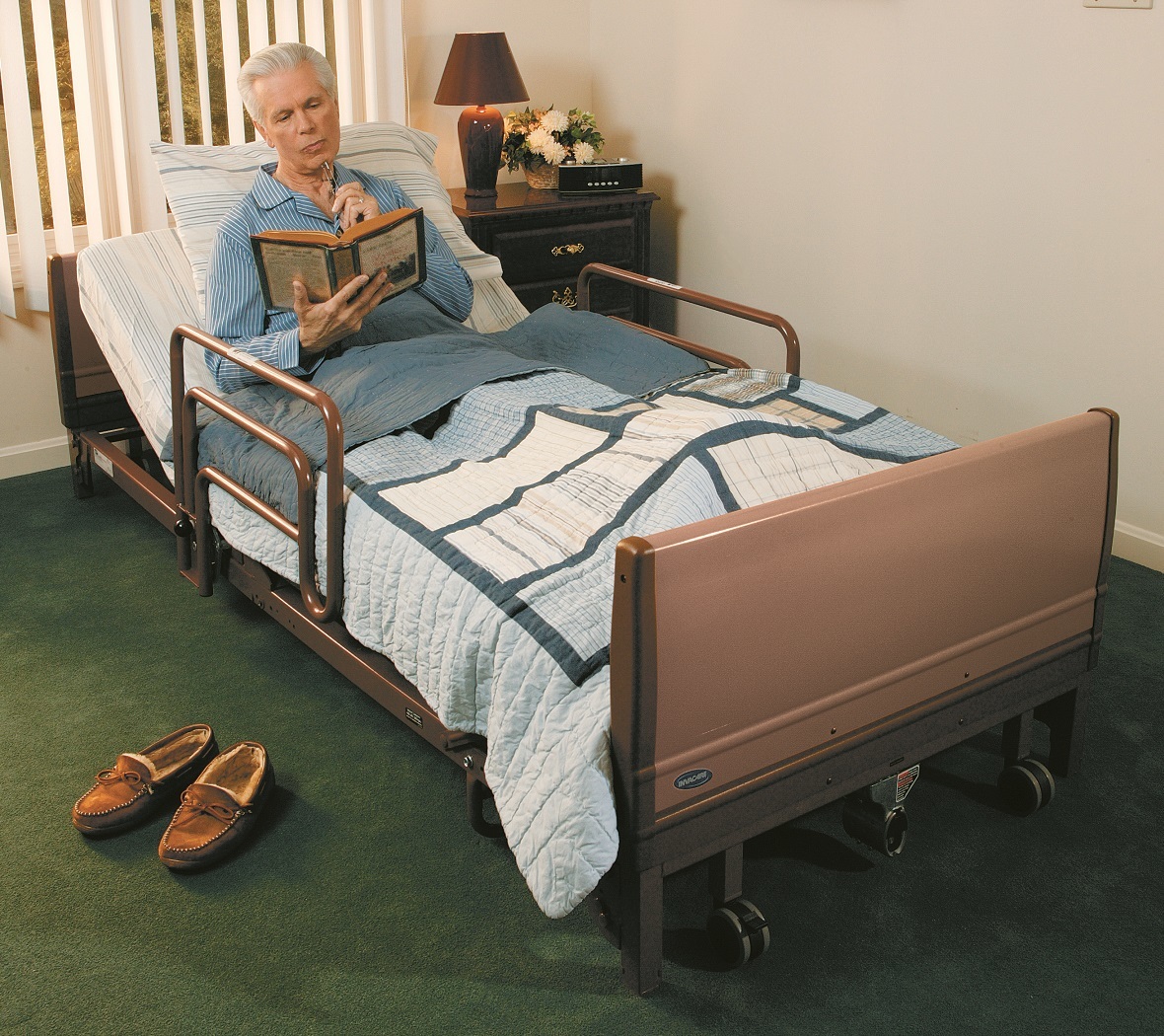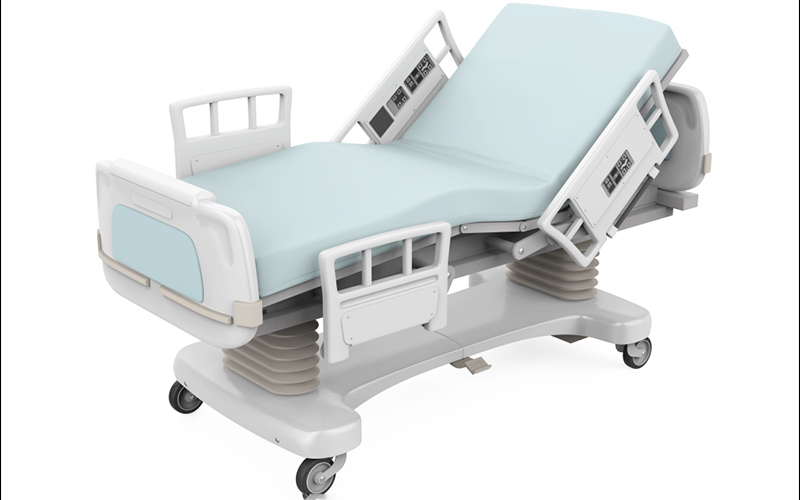The Ultimate Guide To Hospital Beds For Home Use
The Ultimate Guide To Hospital Beds For Home Use
Blog Article
The Basic Principles Of Hospital Beds For Home Use
Table of ContentsHospital Beds For Home Use Fundamentals ExplainedThe Facts About Hospital Beds For Home Use RevealedHow Hospital Beds For Home Use can Save You Time, Stress, and Money.The Ultimate Guide To Hospital Beds For Home UseNot known Incorrect Statements About Hospital Beds For Home Use Not known Incorrect Statements About Hospital Beds For Home Use The smart Trick of Hospital Beds For Home Use That Nobody is Discussing
There are 3 major kinds of health center beds: manual, semi-electric, and fully-electric. Nevertheless, more kinds of medical beds exist and they are detailed below. These beds use hand cranks to change the bed's elevation and increase and decrease the head and the foot. Hand cranks are usually located at the foot of the bed and require an individual that is literally qualified of operating.
Semi-electric beds have an electrical motor to increase and decrease the head and foot portions of the bed. Patients and caregivers adjust the positioning by pressing buttons making use of a hand pendant. The height of the bed is readjusted manually with a hand crank. Full-electric beds have an electric motor that can raise the head and foot sections of the bed as well as the whole elevation and positioning of the bed.
The Best Guide To Hospital Beds For Home Use
There are a number of types of health center beds, each created to meet details individual needs. Below are some common kinds: This is the most typical type of healthcare facility bed, developed for basic clinical use.
Lower to the ground than a conventional bed. This kind of bed is developed for bigger patients, with a wider framework and greater weight capacity than a common bed. This kind of bed is developed especially for children, with smaller dimensions than a basic bed. Unique attributes such as full size side rails and cartoon style.
This kind of bed is developed for seriously unwell clients that call for open tracking and specialized clinical equipment such as ventilators and infusion pumps. This kind of bed is created for usage during labor and shipment, with adjustable settings and features to sustain the mom and child throughout the birth procedure.
Hospital Beds For Home Use Things To Know Before You Buy
Several function and the devices carry out increasing grip to various components of the vertebra and the extremities without moving the human body. These are just a few examples of the sorts of healthcare facility beds readily available. The details kind of bed utilized will depend on the person's problem, clinical requirements, and other factors.
Here is the thing you require to understand. A one-function health center bed is a clinical bed that allows a client to move only the head or foot area up or down. A 2 function hospital bed usually refers to a sort of clinical bed that has two flexible functions to aid people in health centers or care centers.

Hospital Beds For Home Use - An Overview
A 7-function ICU bed is a type of medical bed that supplies a number of flexible features to support critically unwell patients in an intensive care system (ICU) (hospital beds for home use). The 7 functions commonly include: Backrest adjustment: The backrest can be adjusted to various angles to aid the patient rest up or exist down comfortably
Height adjustment: The bed can be raised or lowered to make it easier for clients to get in and out of bed, and for caregivers to give treatment. Trendelenburg position: The entire bed can be slanted to advertise blood circulation and circulation in the body. Reverse Trendelenburg position: The bed can also be tilted in the opposite instructions to promote blood flow and circulation in the top body.
1. What Dimension is a Healthcare Facility Bed? 2. Just how much Does a Medical Facility Bed Price? 3. Why Do Medical Facility Beds Have Side Rails? 4. What Are The Key Health Center Bed Components?. While more cost effective than electrical designs, these beds require exertion for changes. The primary advantages of hand-operated beds are their cost and dependability, as they don't rely on electrical energy. The requirement for hands-on effort can be a limitation in circumstances where fast changes are essential or where caretakers deal with physical challenges.
Rumored Buzz on Hospital Beds For Home Use
Semi-electric healthcare facility beds offer an equilibrium of handbook and electric controls. These beds supply a perfect center ground in between manual and fully electric choices, providing simplicity of use without the full cost of electrical designs.
Semi-electric beds are appropriate for people who need modest changes to the head and foot areas however can handle without regular height changes. This makes them a cost-efficient remedy navigate to these guys for those looking for convenience and comfort without the requirement for consistent repositioning. Completely electric hospital beds include electric controls for smooth modifications to the height, head, and foot areas.
Specialty health center beds, such as ICU beds, lasting care beds, and bariatric beds, are thoroughly created to attend to specific clinical needs. These beds use customized take care of diverse patient groups, improving both outcomes and convenience. In the complying with sections, we will certainly discover the major sorts of specialty health center beds, detailing their details advantages and applications.
With years of experience in making electrical direct actuators - hospital beds for home use and close collaboration with the healthcare market, TiMOTION is well-positioned to offer trustworthy healthcare solutions. Our vertically incorporated firm handles every action of the manufacturing procedure, from design to actuator setting up, ensuring we provide outstanding value and personalized solutions customized to your certain requirements
The Facts About Hospital Beds For Home Use Uncovered

To find out more regarding integrating these modern technologies into your products, call us today. More analysis:.
Information is sourced from the Medicare Expense Report. Accessed January 2025. Temporary intense treatment healthcare facilities have the greatest average number of beds at 187. They are one of the most typical type of medical facility in the united state and comprise greater than 50% of united state healthcare facilities. Children's medical facilities have 178 beds on standard and VA hospitals average 175 beds.

An Unbiased View of Hospital Beds For Home Use
A hospital bed is a bed developed especially for clinical functions. It is not just a place for individuals to rest, but additionally a system for a knockout post medical procedures. Unlike ordinary home beds, hospital beds generally have flexible functions, which can facilitate medical team to his response make numerous adjustments according to the needs of people, such as transforming the height, disposition, and support angle of the back and legs of the bed.
Report this page